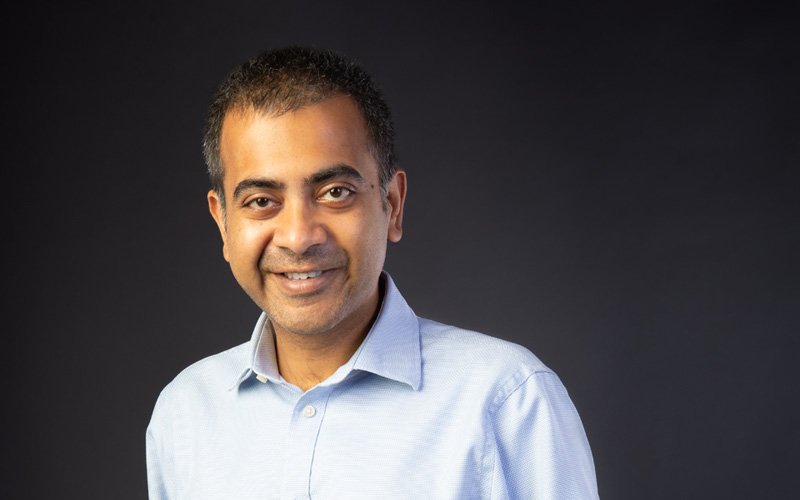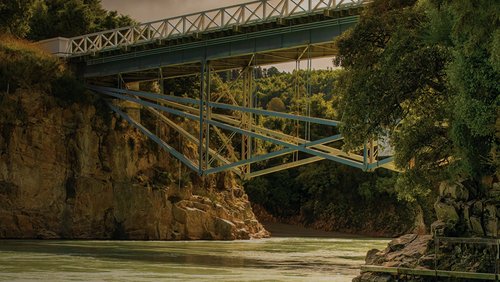10 Oct 2023
This month, we caught up with Saurabh Sinha, Professor and Executive Dean in the Faculty of Engineering at the University of Canterbury.
What is your role at the University of Canterbury (UC)?
I serve UC as a Professor and Executive Dean in the Faculty of Engineering. With my exceptional team, I provide leadership for our academic strategy. Our goal is to consistently produce graduates who emerge as pioneers in the ever-changing world of work. Simultaneously, through our innovative research efforts, we aspire to deliver a transformative impact. In pursuit of this objective, our knowledge contribution encompasses both disciplinary depth and transdisciplinary breadth. In a world full of challenges, our alumni embody resilience, empathy, and kindness towards others.
Who or what got you interested in the wonderful world of engineering?
My interest in engineering continues to renew in phases. Initially, it involved experiments in physics, which gradually expanded to encompass real-world engineering solutions and the interconnectedness with society and its engineering needs. Over the past decade, the most significant rekindling of my passion has come through engagement with the Sustainable Development Goals (SDGs).
What are three of your career highlights?
- In my former role as Deputy Vice-Chancellor of Research and Internationalisation at the University of Johannesburg. I spearheaded the strategic integration of society, education, and impact. This involved a particular focus on aligning the Sustainable Development Goals (SDGs) with the Fourth Industrial Revolution to shape the university's strategy.
- Through my research and professional career, I have achieved recognition as an IEEE Fellow. I am dedicated to advancing mm-Wave integrated circuits for 5G and 6G telecommunications.
- During my tenure as the former Vice-President of IEEE (Educational Activities), I had a significant opportunity to revolutionize the paradigm of continuing education by fostering collaboration between academia and industry. Additionally, I played a pivotal role as a global co-founder of Engineering Projects in Community Service (EPICS)-in-IEEE.

A recent photo of Saurabh Sinha. Photo: Corey Blackburn
How do you describe the Washington Accord to students?
I have greatly appreciated MIT's Conceive-Design-Implement-Operate (CDIO) framework. I introduce the Washington Accord (WA) as a set of agreements enabled by the International Engineering Alliance (IEA). Graduates under the WA demonstrate a stronger focus on the 'CD' aspects, while Sydney Accord graduates concentrate on 'D-IO.' One of the notable advantages, which I've personally experienced in relocating from South Africa to New Zealand, is the value of graduate mobility for both employment opportunities and education.
How do you think that engineering students can improve their soft skills before entering the workforce?
Perhaps we should refrain from labelling 'soft' skills as 'soft,' as they frequently prove to be the most challenging to acquire. There exist numerous avenues through which we pursue this objective at UC. Our strategy revolves around the central theme of 'engagement.' This approach holds significance in enhancing one's emotional and social intelligence. Apart from the structured university courses that involve teamwork, active participation in student societies/clubs and professional associations presents another pathway. Speaking from personal experience, my early engagement with the IEEE proved to be immensely beneficial.
How are you ensuring that diversity and inclusion are living values at the Faculty of Engineering at the University of Canterbury?
Regarding diversity and inclusion, we have more work to do. While the university strongly subscribes to diversity and inclusion values, data demonstrates a significant demographic gap – particularly among women, Māori, and Pasifika. Currently, we are taking further steps, including offering more scholarships, creating a more conducive environment, and incorporating bicultural competence as a university graduate attribute. Although I have previously implemented and experienced similar approaches positively, their contributions have been incremental. In my view, a more systemic approach is required – one that involves pedagogical reform emphasizing the purpose orientation of engineering education and engagement. This can be practically achieved by embedding programs such as EPICS within curricula. For instance, at UC, the Global Humanitarian Engineering program showcases greater diversity and inclusion.
It is an exciting time to be in engineering
Why are you a member of Engineering New Zealand?
I'm a registered Professional Engineer with the Engineering Council of South Africa (ECSA). Over the past 15 years, I have volunteered my time to contribute through various ECSA committees. Upon relocating to New Zealand (NZ), I recognised Engineering New Zealand (ENZ) as an opportunity to network and connect with professionals in the industry and academia. Both ENZ and ECSA are signatories of the Washington Accord (WA), and the process of becoming a Chartered Professional Engineer (CPEng) assisted in understanding the aspects of accountability outlined in the Chartered Professional Engineers Act 2002 and other relevant legislation. Due to my research interests, I also delved into the details of the Telecommunications Act. As a result of the CPEng process, it was interesting to learn that NZ was the first country to auction telecommunications spectrum!
Why do you think it is such a good time to be an engineer?
It is an exciting time to be in engineering. The intersection between society, engineering, and impact has become more pronounced; the rapid transformation that artificial intelligence is bringing about, both its pros and cons, creates an array of new opportunities within this intersection. Engineers have a greater chance to contribute through a transdisciplinary platform towards advancing technology for humanity (leveraging the IEEE tagline).
What are your areas of engineering interest?
My personal area of research and innovation is in mm-Wave integrated circuits for 5G and 6G telecommunications. The ultimate goal is to enable high-speed ubiquitous communications, which can be likened to building data 'highways' worldwide. Historically, our focus has been on transmitter and receiver design. However, AI introduces new possibilities for how we perceive the communication channel. On the societal front, there's a growing awareness that technology and its infrastructure can inadvertently exclude certain groups of people. Therefore, the cost-effective global deployment of technology is also of significant interest.
If you could meet any engineer in the world, who would it be and why?
Sundar Pichai, CEO of Alphabet Inc. (Google). Google's approach to 'appropriate' artificial intelligence (AI) continues to pique interest, making the exploration of the pros and cons of AI a valuable topic for discussion!
What is your favourite piece of engineering in Christchurch?
There is light at the end of the tunnel! As we drove through the Ōtira Tunnel, we started to reflect on the complexity of its construction and maintenance. It would definitely get my vote!




